Understanding the source of your traffic means a lot to data analysis in Google Analytics. When you know where your visitors are coming from, you have all kinds of insight—social media, keywords, advertisements, oh my!
But you’ve probably noticed that Google Analytics marks a chunk of your traffic as direct/none, and this can be a bit confusing.
What exactly does direct/none mean in Google Analytics? Direct/none may appear in your GA traffic reports under source/medium. This means Analytics doesn’t have any referral information for these users. You can look into them in more detail in your traffic reports and reduce direct/none traffic with URL tagging.
There are lots of reasons why a user may be in the direct/none bucket. Keep reading to learn more about this tag and what you can do to investigate the traffic that’s marked this way in Google Analytics.
If you'd rather watch than read, you can check out our YouTube channel:
Key takeaways
- In GA4, a big chunk of the traffic source and medium is marked as “Direct/none“
- This not a bug in GA4, but there are several explanations for it
- It’s easy to filter a report to find all the pages with a source/medium set as direct/none
- Luckily, you can partly prevent this blind traffic spot with UTM tags
What Does Direct/None Mean?
If you’re monitoring your traffic in Google Analytics, you’re probably interested in where your users are coming from. After spending a lot of effort on a particular campaign, you’re surely hoping to see users come from certain entrance sources.
But when you look at “source/medium” in your traffic reports, you might see some users listed as direct/none.
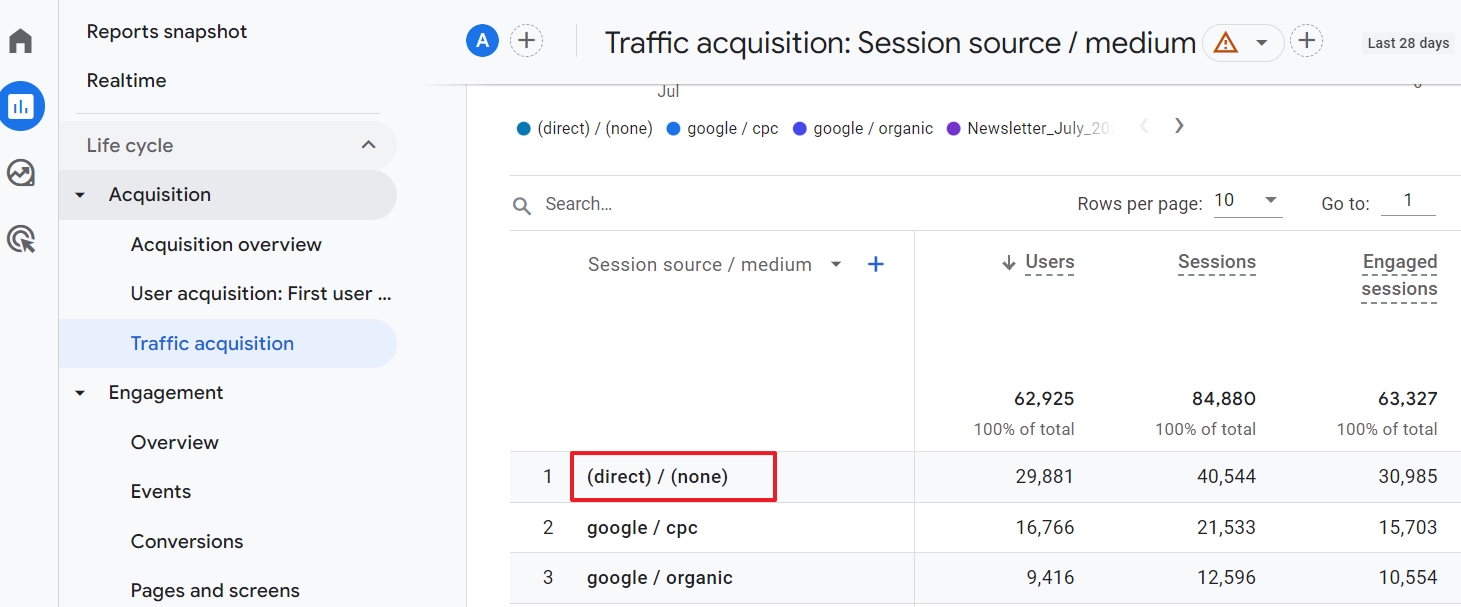
Direct/none means Analytics can’t determine an entrance source for a particular user. It has received no referral information for this user and can’t tell you exactly how their session on your site started. Not super helpful, we know, but this term is a catchall for visitors who, for some reason or another, aren’t able to be tracked from an entrance source. You can also just refer to this traffic as “direct.”

Luckily, you can dive further into the direct/none category in your traffic reports to learn about and analyze this traffic in a meaningful way. You can also reduce your direct traffic and clean up your data. We’ll discuss that in the upcoming sections, but first, let’s talk about why a user might end up in the direct/none bucket in Google Analytics.
Why Is Some Traffic Marked as Direct/None?
There are lots of reasons a user may be marked as direct/none in your traffic reports. Here are some common reasons why users fall into this category:
- The user typed your URL directly into the browser. This is very common, especially if you have an easy and short homepage URL. The visitor came directly to your site, so there’s no referral source.
- Along the same lines, the user might’ve bookmarked your site.
- You could also run into the direct/none issue if your user clicked on a link to your site in a mobile app.
- Another reason for direct/none traffic is when your user arrives at your site from a platform that’s not web-based, like a PDF. Analytics necessarily can’t track that as a referral source.
- Your users might be getting redirected because of a URL shortener. If you use certain URL shorteners, they’ll redirect to their own server, which interrupts the referral linking, so Analytics can’t track it.
- There could also be an issue due to secure hosting (SSL). If your site is not secured (http), and a visitor came from a secured (https) site, the data won’t be passed on. Also, if you just recently switched your site to secured, then redirects from your old non-secure site could cause a similar issue. If you’re recently made this change and noticed your direct/none traffic went up, that’s probably the reason why.
- If your user has an ad blocker, it might destroy cookies, hiding referral information from Analytics.
Understanding Direct/None Traffic
Okay, so you’re probably wondering what you can do about direct traffic now that you know where it might come from. While it’s almost impossible to know where all your direct traffic is coming from, you can get a pretty good idea by diving into your traffic reports.
The GA4 landing page report is a good place to find out more about your direct traffic. You can open it by clicking Reports > Engagement > Landing page.
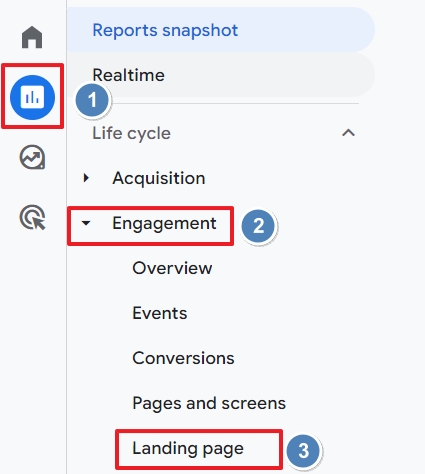
Here, you’ll see a list of all the landing pages your direct traffic goes to. You can filter the direct/none traffic by adding source/medium as a secondary dimension to the report.
To do so, click on the + sign in the table, next to Landing page, which is your default primary dimension for this report.
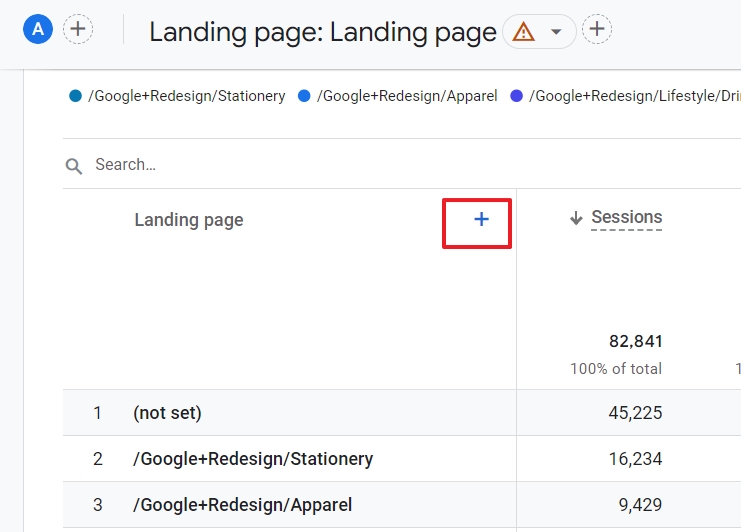
Then go to Traffic source > Session source/medium.
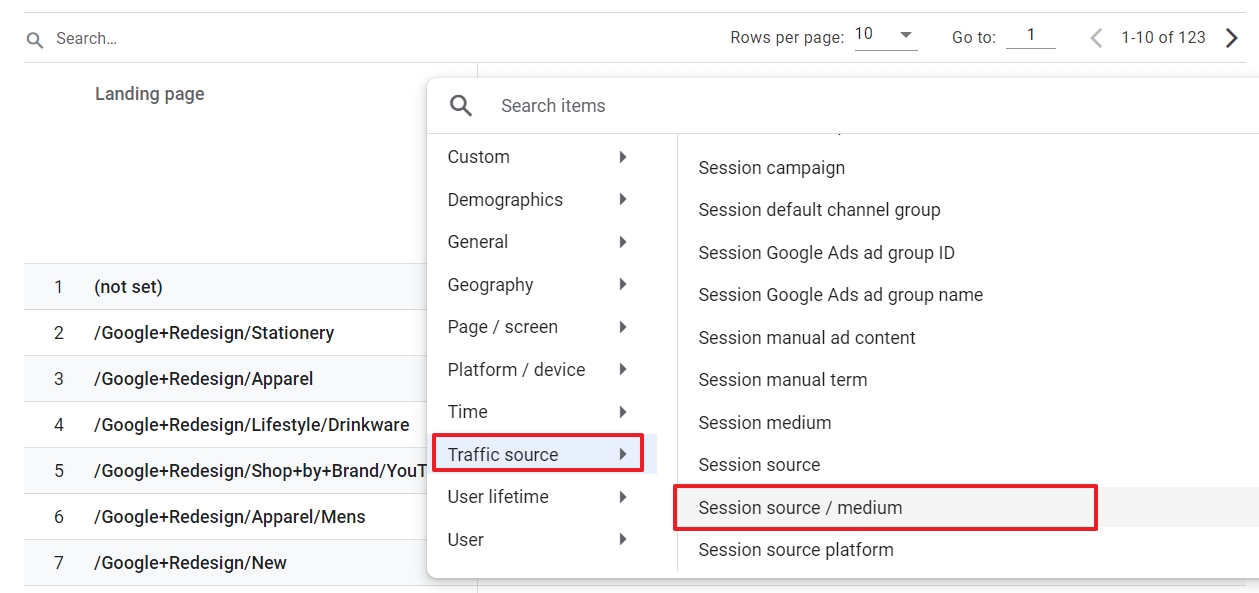
Now you can see how many ‘direct/not set’ sessions happened for every page your visitors landed on.
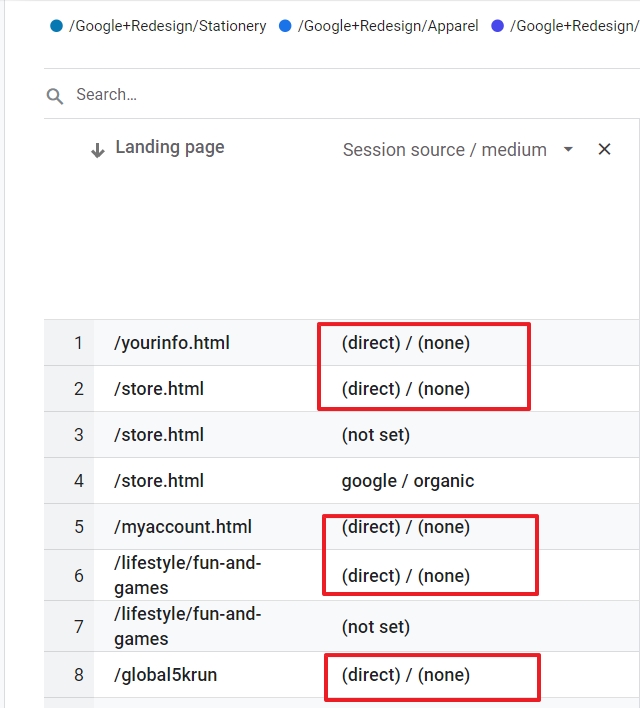
As we show in the YouTube video above, you can also create a filter for the report and exclude all the other source/medium traffic.
Let me quickly explain with screenshots how you can create a report to filter only direct/none traffic. We remain in the landing page report.
Then click the Edit comparisons button at the top-right corner of your screen.

A screen slides open and here you click Add new comparison.
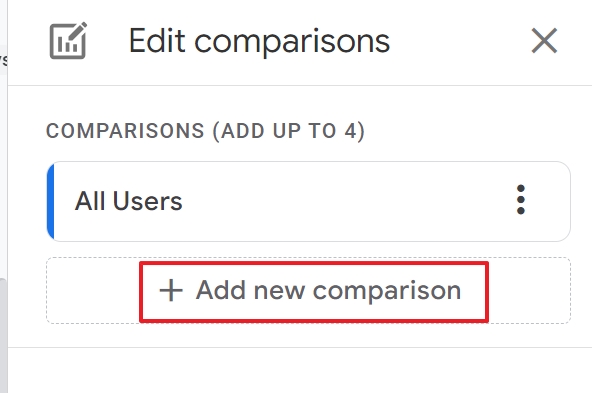
Leave the dimension as Include and then scroll to Session Source/medium.
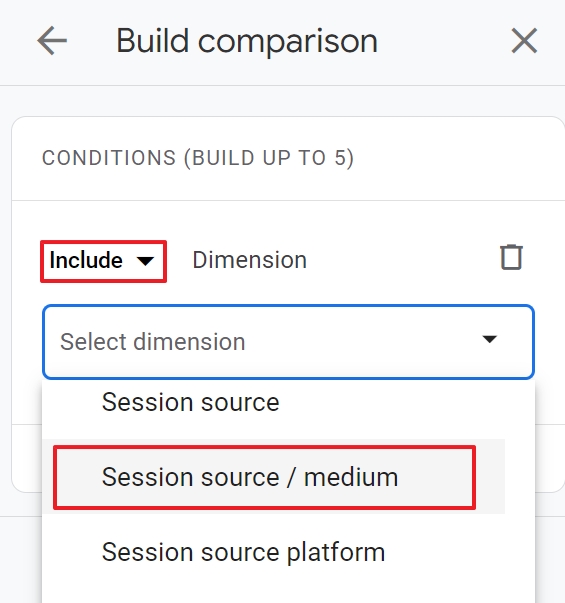
Google analytics now populates all the Session dimension values that drove traffic. Select direct/none and click on the blue Apply button.
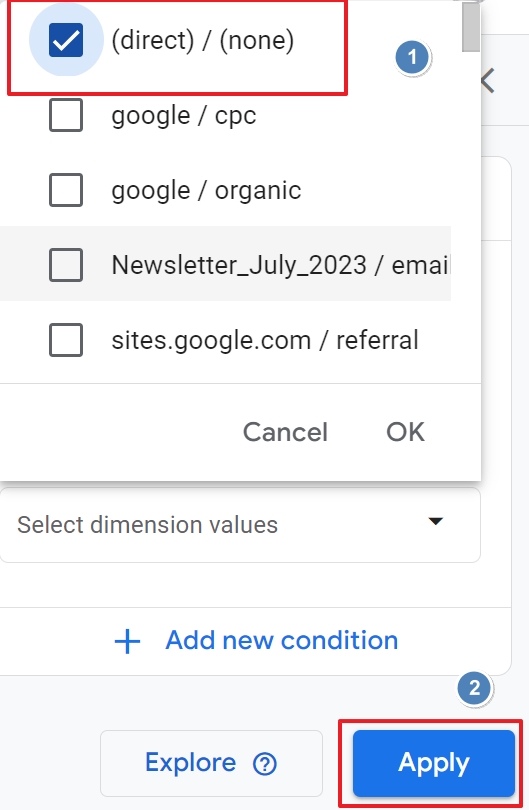
The report will still show other sources because the default primary dimension “All users” is still there. The best you can do is to remove it. Click on the 3 dots and then “Remove comparison”
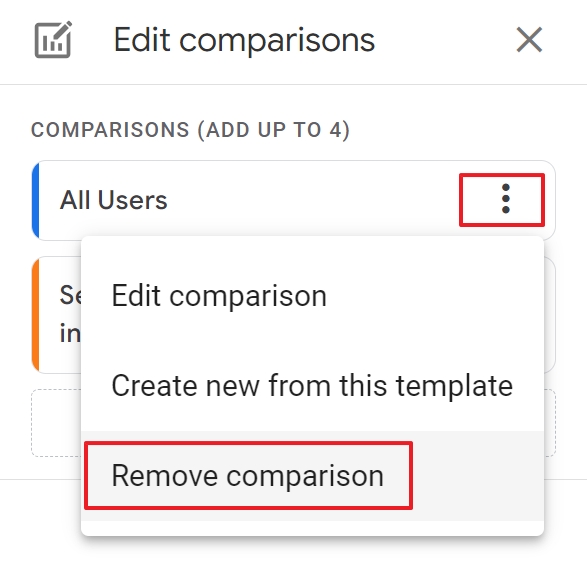
Your landing page report now only contains direct/none traffic. You can dynamically sort the table by clicking on, for instance, Sessions.
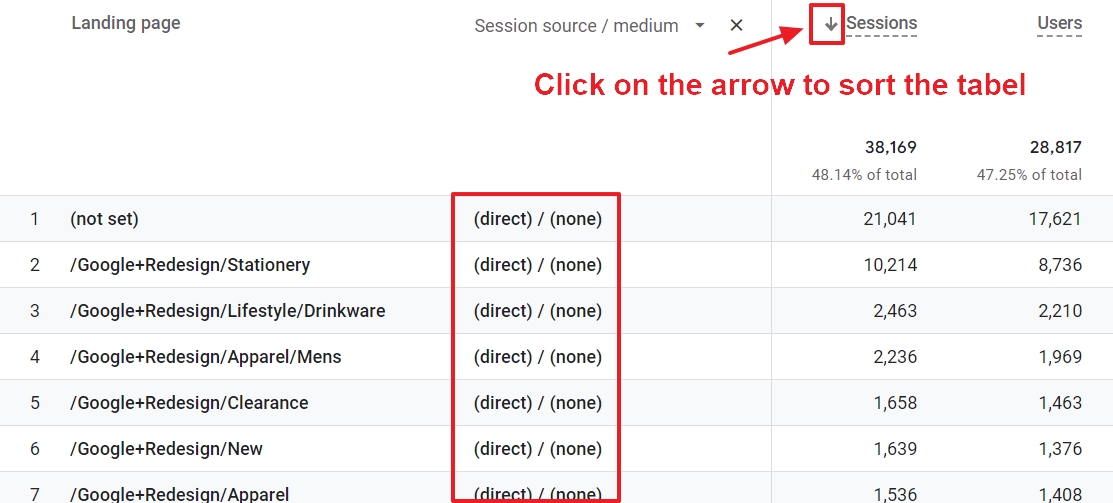
If you want to take it one step further, you can save your report as a custom report. This will save you from doing the above steps in the future.
Now it’s time to go through the pages that attract your attention and that look weird or suspicious.
Maybe you included a link to one of your landing pages in a particular mobile app?
Or maybe you distributed a PDF with a link to a press release landing page?
Or maybe you launched a QR campaign but the data only shows direct/not set?
Analyzing the landing page should give you a much better idea of where those people are coming from and how to fix the problem.
How to Fix the Direct/None Issue
While you probably won’t ever be able to do away with direct traffic completely, there is something you can do. The best tip for cutting down on your direct traffic is to make sure you’re tagging all the URLs in your marketing campaign.
URL tags will make sure that your visitors are being tracked in Analytics from a particular referral source. It’s pretty easy to build campaign tags with a tool like the Google Analytics URL Builder. The more you tag everything you release to the public, the more your direct traffic will decrease. Even shortened URLs or ones that come from a non-web-based source can be tracked.
Direct/None in Google Analytics
It’s frustrating and unhelpful to see a lot of traffic marked as “direct/none” in Google Analytics. But remember, you can still analyze this data and even reduce your direct traffic.
First, make sure you look at the landing pages your direct/none users arrive on and see if they’re linked to a referral source that Analytics can’t track (like a link in a PDF or a mobile app). Also, include URL tags in everything you post. This way, you can control how Analytics tracks your traffic as much as possible.
You might not do away with direct traffic entirely, but with some work, you can get much closer and better understand the direct traffic you still see in your reports.
